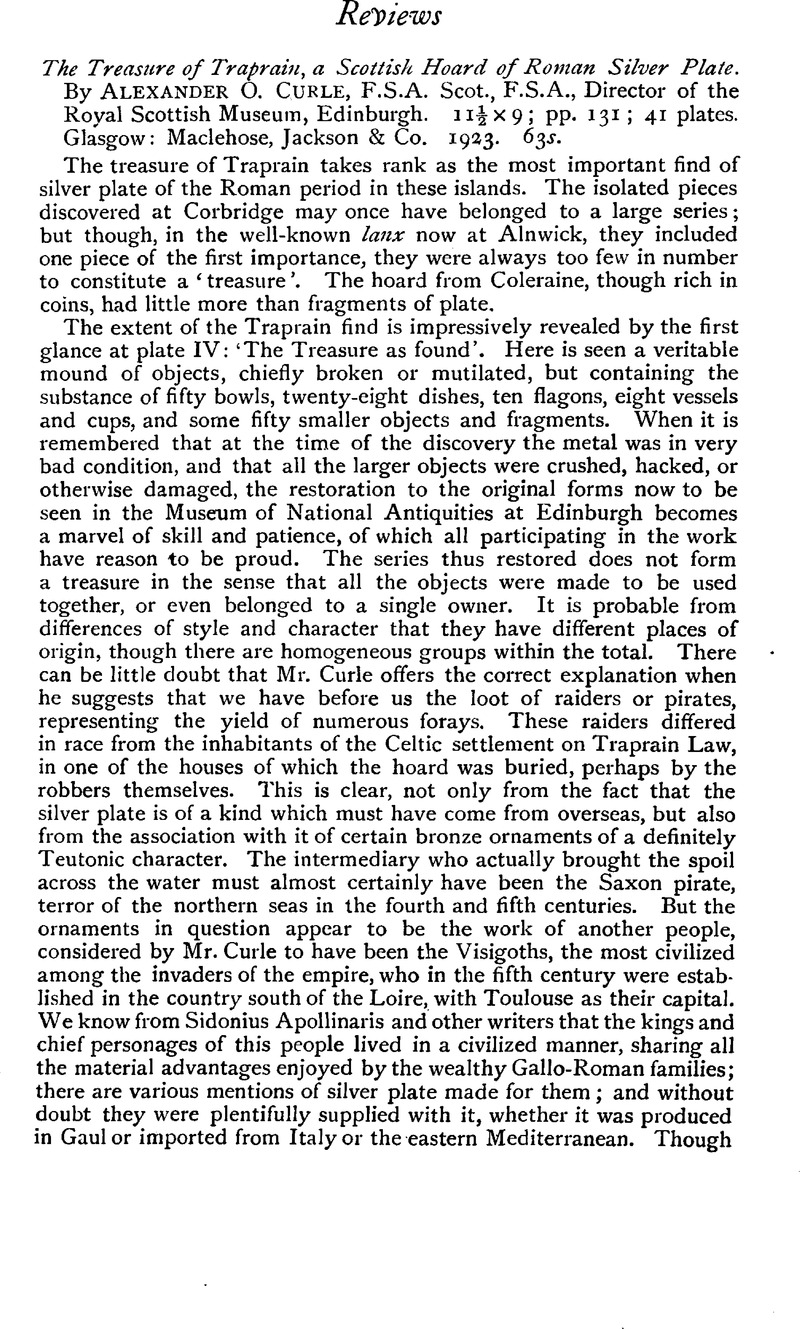No CrossRef data available.
Article contents
The Treasure of Traprain, a Scottish Hoard of Roman Silver Plate. By Alexander O. Curle F.S.A. Scot., F.S.A., Director of the Royal Scottish Museum, Edinburgh. 11½ × 9; pp. 131; 41 plates. Glasgow: Maclehose, Jackson & Co. 1933. 63s.
Published online by Cambridge University Press: 08 January 2012
Abstract

- Type
- Reviews
- Information
- Copyright
- Copyright © The Society of Antiquaries of London 1923
References
page 271 note 1 Pierced gold panel and buckle-plates with nielloed busts found in Asia Minor with aurei of Constantius (British Museum, Cat. of Early Christian Antiquities, nos. 252–4).
page 271 note 2 The ewer and basin are in the Antiquarium at Berlin (Zahn, R. in Amtliche Berichte aus den königlichen Kunstsammlungen, xxxviii, 1916-1917, cols. 269 ff.).Google Scholar draws attention to vessels, apparently with pearled borders, in a catacomb painting at Rome connected with Vincentius, a priest of Sabazius, and dating from the first half of the fourth century (Wilpert, , Roma Sotterranea, pl. 132).Google Scholar We may perhaps add the miniature in the later of the illuminated Virgils in the Vatican (Cod. 3867) reproduced in Codices e Vaticanis Selecti, ii, 1902, pl. 13, where a dish, pearled round the edge, holds a fish.
page 272 note 1 Cf. the miniature in the Vatican MS. cited in the previous note.
page 272 note 2 It may be noted that in another section of this ring-vault mosaic a whole service of fourth-century silver vessels is represented, dispersed among foliage. Among them may be remarked forms analogous to some of the Traprain pieces, e. g. a fluted dish or basin.
page 272 note 3 Matthies, G., Mitthetlungen des K. Deutschen Arch. Inst. xxxix, 1914, pp. 104 fF.Google Scholar If the attribution of this dish to the second century is correct, it ranks with the mosaic pavements as an important example of the spread of oriental motives and methods into the West. It is mentioned by Mr. Curie.
page 273 note 1 Journal of Roman Studies, iv, 1914, p. 12Google Scholar.
page 274 note 1 Archaeologia, Ivi, 1898, pp. 9 ff.Google Scholar This find is of great interest on account its ornament, which well illustrates the surface-covering principles of design alluded ot above. Like the Traprain treasure, it contains a fish-dishwith a fish represented in the middle.




